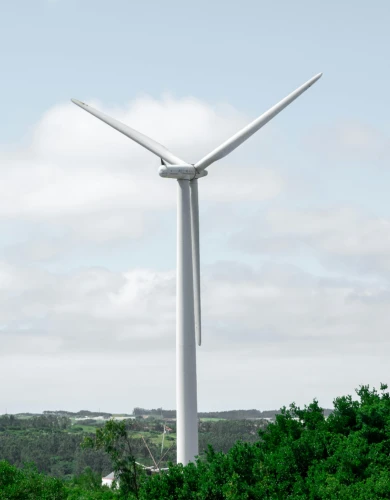How to arrange a business electricity meter installation
There are a few common reasons why a business might need a new electricity meter. You may be upgrading to a smart meter, replacing an old or faulty one or moving it to a new location.
While the idea of getting a new meter might sound complicated, it doesn’t have to be. This guide breaks down the process step by step and explains how many businesses can get a new meter installed at no extra cost.
Here’s what we cover:
- What is a commercial electricity meter?
- Do you need a business electricity meter installation?
- What do you need before arranging a business electricity meter installation?
- How to arrange a business electricity meter installation
- How much does a business electricity meter installation cost?
- Types of business electricity meters
What is a commercial electricity meter?
A commercial electricity meter is a device installed at business premises to measure the amount of electrical power consumed over time.
It measures power consumption in kWh and is used by energy suppliers to calculate business electricity rates.
In contrast to residential power supplies, electricity meters for energy-intensive commercial properties may include the following additional features:
- Measuring reactive power consumption
- Measuring consumption for a three-phase power supply
- Taking automatic readings every 30 minutes
Do you need a business electricity meter installation?
There are several scenarios where a business electricity meter installation is required. Here are the most common:
- Upgrading to a smart business energy meter
- Upgrading to a half-hourly meter due to increased electricity usage
- Replacing an older meter that is no longer functioning
- Refitting your property
- Relocating the meter within your property
New connections to the grid also require a meter installation, but we’ve covered this in our separate guide to new business electricity connections.
What do you need before arranging a business electricity meter installation?
To arrange a new business electricity meter installation, you’ll need to gather the following information:
- MPAN number – A unique identifier associated with your connection to the local grid
- Annual consumption – The expected annual power consumption of your property
- Maximum demand – The maximum power consumption in kW of your commercial property
This information enables an electrical engineer to determine the most suitable type of business electricity meter for your property.
How to arrange a business electricity meter installation
To organise a business electricity meter installation, you must have an active business energy contract with a licensed electricity supplier for your property.
Our business energy experts can help you navigate the process of arranging a new business electricity meter installation with your supplier.
Start by using our business electricity comparison service, and we’ll find you a supplier who can install your new meter free of charge as part of setting up a new fixed contract.
Business electricity meter installation process
The steps below explain how to install an electricity meter at a small commercial property with a single-phase power supply, where the new meter is being installed in the same location as the old one.
1. Site assessment
In advance of a meter installation, an electrical engineer will review the information you’ve provided about your site to determine the most appropriate type of meter for your property.
See more below on the available types of business electricity meters.
2. Preparation for meter installation
In advance of your installation, we recommend clearing the space around your meter to ensure easy access for the electrical engineer.
A typical installation will take approximately one to two hours, during which the power to your property will be turned off for around 30 minutes.
We recommend planning ahead to minimise disruption to your business.
3. Physical installation
The electrical engineer will begin the physical installation by conducting a safety check of your existing electrical equipment.
They will then cut the power supply to allow safe removal of the existing meter.
The new business electricity meter will be securely connected in place of the original.
4. Meter testing
Your electrical engineer will restore the power supply to your property and perform tests to ensure the new meter is functioning correctly and safely.
Testing includes a calibration check to confirm that the meter is accurately measuring the business energy consumption of your property.
5. Communication setup
As a final step, the engineer will configure the meter’s communication module and verify that it is transmitting energy meter readings successfully.
This step ensures that your supplier begins receiving consumption data from the new meter.
How long does a commercial electricity meter installation take?
The installation of a new business electricity meter can be completed in as little as one week if it is carried out on an existing live electricity supply.
Here’s a typical timeline after you’ve signed up for a new meter installation with a business energy supplier:
- Installation date booked 1–2 weeks in advance
- Installation work takes 1–2 hours
Half-hourly or three-phase meters are more complex and may take longer to arrange.
How much does a business electricity meter installation cost?
It’s often possible to arrange a business electricity meter installation free of charge, particularly in the following circumstances:
- Small business properties can request a smart meter upgrade at no cost as part of the national meter rollout.
- When switching business energy suppliers and signing up for a new fixed contract.
- Where your meter has reached the end of its certified lifespan.
For energy-intensive properties, it may be necessary to appoint a meter operator to handle your installation separately.
Meter operators may charge an initial installation fee of a few hundred pounds, plus ongoing meter operator charges for the maintenance and communication of the new meter.
Types of business electricity meters
Here’s a breakdown of the different types of electricity meters used in British commercial properties.
The type of business electricity meter you have is defined by the first two digits on your MPAN, known as the profile class.
💡 Your type of electricity meter determines the business electricity standing charges you will pay on business electricity bills.
Single-rate electricity meter
MPAN Profile Class: 03
Single-rate meters are the most common type of electricity meter used by businesses. A single-rate meter records electricity consumption as a single measurement, regardless of the time of day.
If you have a single-rate electricity meter, you cannot take advantage of off-peak business electricity tariffs.
Multi-rate electricity meter
MPAN Profile Class: 04
Multi-rate electricity meters record two or three separate measurements of electricity consumption at different times of the day.
These meters enable businesses to benefit from lower electricity rates during off-peak hours while incurring higher rates per kWh during peak times.
Multi-rate business electricity meters include the following types:
- Economy 7: Offers lower rates during a 7-hour period classified as “off-peak”
- Economy 10: Offers lower rates during a 10-hour period classified as “off-peak”
- Evening and Weekend: Offers lower rates during the evening and on weekends
- Three-rate: Records consumption separately for daytime, evening, and night periods
Half-hourly meters
MPAN Profile Class: 00, 05-08
Half-hourly (HH) meters take readings every 30 minutes and transmit them directly to your supplier.
Businesses with a maximum demand exceeding 100 kW in any 30-minute period are required to have a half-hourly meter installed.
Find out more in our guide to half-hourly business electricity meters.
Smart business electricity meters
Smart meters are the latest generation of energy meters for small businesses. They transmit real-time electricity consumption data to your supplier and business energy monitor.
Smart meters are currently being rolled out to businesses with Profile Class 03 or 04, replacing older analogue meters in preparation for the market-wide half-hourly settlement reform.
Find out more in our guide to smart business energy meters.
Replacing a business electricity meter
Commercial electricity meters typically have a lifespan of 10 to 20 years, during which they reliably measure power consumption.
Suppliers proactively replace older meters before they reach the end of their certified life.
If your business electricity meter replacement is initiated by your supplier due to a suspected fault, it should be free of charge.
If you believe there is a problem with your meter, we recommend contacting the customer services department of your business electricity supplier.
Business electricity meter installation FAQs
Our business energy experts answer frequently asked questions regarding business electricity meters and their installation.
How does a business electricity meter work?
A business electricity meter uses electrical circuitry to continuously measure the voltage and current of the power supply passing through the meter.
The power consumption, measured in kWh and displayed on the front of the meter, is the product of the voltage (in kilovolts) and the current (in amps).
Can I install a meter without a supplier?
No, you must have a registered energy supplier to install a new electricity meter for your business.
In Britain, only licensed energy suppliers are authorised to register a meter on the national electricity database.

